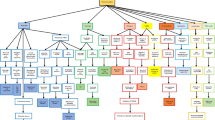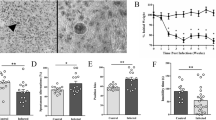Abstract
Toxoplasmosis is a globally parasitic zoonotic disease transmitted by Toxoplasma gondii protozoa. This infection in its chronic form can cause a change in its host's specific behavior and is also associated with develo** neuropsychological symptoms in humans. Changes in neurotransmitters' levels, especially dopamine, have been identified as a behavior change factor in the infected host. This study aimed to evaluate serum dopamine levels in acute murine toxoplasmosis. In this study, 50 mice infected with Toxoplasma were studied in 5 separate groups, and ten healthy mice were considered as negative control. For five consecutive days after parasite injection, blood sampling and serum isolation were performed daily from one of the groups. Serum dopamine levels were measured by HPLC method. Statistical studies showed that serum dopamine on the first to the fourth day after parasite inoculation was the same as the negative control, but the fifth day began to increase. The present study results indicate that dopamine production in mice infected with Toxoplasma gondii increases from day five after infection. This result suggests that in acute toxoplasmosis, dopamine production is low, and the trend of chronic disease increases dopamine production.



Similar content being viewed by others
References
Asgari Q, Mehrabani D, Motazedian M, Kalantari M, Nouroozi J, Adnani Sadati S (2011) The viability and infectivity of Toxoplasma gondii tachyzoites in dairy products undergoing food processing. Asian J Anim Sci 5(2):1–6
Asgari Q, Keshavarz H, Shojaee S, Motazedian MH, Mohebali M, Miri R, Mehrabani D, Rezaeian M (2013) In vitro and in vivo potential of RH strain of Toxoplasma gondii (Type I) in tissue cyst forming. Iran J Parasitol 8(3):367–375
Asgari Q, Sisakht MM, Shahabadi SN, Karami F, Omidian M (2020) Serum tyrosine level in acute murine toxoplasmosis. Iran J Parasitol 15(4):568–575
Babaie J, Sayyah M, Fard-Esfahani P, Golkar M, Gharagozli K (2017) Contribution of dopamine neurotransmission in proconvulsant effect of Toxoplasma gondii infection in male mice. J Neurosci Res 95(10):1894–1905
Bahreini MS, Zarei F, Dastan N, Sami Jahromi S, Pourzargham P, Asgari Q (2020) The relationship between Toxoplasma gondii infection in mothers and neonate’s gender. J Matern Fetal Neonatal Med. https://doi.org/10.1080/14767058.2020.1849103
Berdoy M, Webster JP, Macdonald DW (2000) Fatal attraction in rats infected with Toxoplasma gondii. Proc Soc Exp Biol Med 267(1452):1591–1594
Berenreiterová M, Flegr J, Kuběna AA, Němec P (2011) The distribution of Toxoplasma gondii cysts in the brain of a mouse with latent toxoplasmosis: implications for the behavioral manipulation hypothesis. PloS one 6(12):e28925
Berke JD (2018) What does dopamine mean? Nat Neurosci 21(6):787–793
Boillat M, Hammoudi PM, Dogga SK, Pagès S, Goubran M, Rodriguez I, Soldati-Favre D (2020) Neuroinflammation-associated aspecific manipulation of mouse predator fear by Toxoplasma gondii. Cell reports 30(2):320–334
Bucolo C, Leggio GM, Drago F, Salomone S (2019) Dopamine outside the brain: The eye, cardiovascular system and endocrine pancreas. Pharmacol Ther 203:107392
Buttarelli RF, Fanciulli A, Pellicano C, Pontieri E, F, (2011) The dopaminergic system in peripheral blood lymphocytes: from physiology to pharmacology and potential applications to neuropsychiatric disorders. Curr Neuropharmacol 9(2):278–288
Carey RM (2001) Renal dopamine system: paracrine regulator of sodium homeostasis and blood pressure. Hypertension 38(3):297–302
Carruthers VB, Suzuki Y (2007) Effects of Toxoplasma gondii infection on the brain. Schizophr Bull 33(3):745–751
Council NR (2011) Guide for the care and use of laboratory animals, National Academies Press, Washington
Del Grande C, Galli L, Schiavi E, Dell’osso L, Bruschi F, (2017) Is Toxoplasma gondii a trigger of bipolar disorder? Pathogens 6(1):3
Dubey JP (2020) The history and life cycle of Toxoplasma gondii. Elsevier, USA
Eisenhofer G, Kopin IJ, Goldstein DS (2004) Catecholamine metabolism: a contemporary view with implications for physiology and medicine. Pharmacol Rev 56(3):331–349
Fekadu A, Shibre T, Cleare AJ (2010) Toxoplasmosis as a cause for behaviour disorders-overview of evidence and mechanisms. Folia Parasitol 57(2):105
Flegr J (2013a) How and why Toxoplasma makes us crazy. Trends Parasitol 29(4):156–163
Flegr J (2013b) Influence of latent Toxoplasma infection on human personality, physiology and morphology: pros and cons of the Toxoplasma–human model in studying the manipulation hypothesis. J Exp Biol 216(1):127–133
Gaskell EA, Smith JE, Pinney JW, Westhead DR, Mcconkey GA (2009) A unique dual activity amino acid hydroxylase in Toxoplasma gondii. PloS one 4(3):e4801
Hammoudi P-M, Soldati-Favre D (2017) Insights into the molecular basis of host behaviour manipulation by Toxoplasma gondii infection. Emerging Top Life Sci 1(6):563–572
Innes E (2010) A brief history and overview of Toxoplasma gondii. Zoonoses Public Health 57(1):1–7
Iversen SD, Iversen LL (2007) Dopamine: 50 years in perspective. Trends Neurosci 30(5):188–193
Johnson SK, Johnson PTJ (2020) Toxoplasmosis: recent advances in understanding the link between infection and host behavior. Annu Rev Anim Biosci 9(1):249–264
Kaňková Š, Kodym P, Flegr J (2011) Direct evidence of Toxoplasma-induced changes in serum testosterone in mice. Exp Parasitol 128(3):181–183
Lim A, Kumar V, Hari Dass SA, Vyas A (2013) Toxoplasma gondii infection enhances testicular steroidogenesis in rats. Mol Ecol 22(1):102–110
Mirzaeipour M, Mikaeili F, Asgari Q, Nohtani M, Rashidi S, Bahreini MS (2020) Evaluation of the tyrosine and dopamine serum level in experimental infected BALB/c mice with chronic toxoplasmosis. bioRxiv.
Omidian M, Ganjkarimi AH, Asgari Q, Hatam G (2020) Molecular and serological study on congenital toxoplasmosis in newborn of Shiraz, Southern Iran. E Environ Sci Pollut Res Int 28(3):16122–16128
Parlog A, Schlüter D, Dunay IR (2015) Toxoplasma gondii-induced neuronal alterations. Parasite Immunol 37(3):159–170
Pearce BD, Kruszon-Moran D, Jones JL (2012) The relationship between Toxoplasma gondii infection and mood disorders in the third national health and nutrition survey. Biol Psychiatry 72(4):290–295
Robert-Gangneux F, Dardé M-L (2012) Epidemiology of and diagnostic strategies for toxoplasmosis. Clin Microbiol Rev 25(2):264–296
Saadatnia G, Golkar M (2012) A review on human toxoplasmosis. Scand J Infect Dis 44(11):805–814
Sarkar C, Basu B, Chakroborty D, Dasgupta PS, Basu S (2010) The immunoregulatory role of dopamine: an update. Brain Behav Immun 24(4):525–528
Shiadeh MN, Esfandyari S, Ashrafmansouri M, Mirzapour A, Taghipour A, Spotin A, Arefkhah N, Gamble R, Safa A, Rostami A (2020) The prevalence of latent and acute toxoplasmosis in HIV-infected pregnant women: a systematic review and meta-analysis. Microb Pathog. https://doi.org/10.1016/j.micpath.2020.104549
Stibbs H (1985) Changes in brain concentrations of catecholamines and indoleamines in Toxoplasma gondii infected mice. Ann Trop Med Parasitol 79(2):153–157
Strobl JS, Goodwin DG, Rzigalinski BA, Lindsay DS (2012) Dopamine stimulates propagation of Toxoplasma gondii tachyzoites in human fibroblast and primary neonatal rat astrocyte cell cultures. J Parasitol 98(6):1296–1299
Torrey EF, Yolken RH (2003) Toxoplasma gondii and schizophrenia. Emerg Infect Dis 9(11):1375
Wang ZT, Verma SK, Dubey JP, Sibley LD (2017) The aromatic amino acid hydroxylase genes AAH1 and AAH2 in Toxoplasma gondii contribute to transmission in the cat. PLoS pathogens 13(3):e1006272
**ao J, Li Y, Prandovszky E, Karuppagounder SS, Talbot CC Jr, Dawson VL, Dawson TM, Yolken RH (2014) MicroRNA-132 dysregulation in Toxoplasma gondii infection has implications for dopamine signaling pathway. J Neurosci 268:128–138
**ao J, Prandovszky E, Kannan G, Pletnikov MV, Dickerson F, Severance EG, Yolken RH (2018) Toxoplasma gondii: biological parameters of the connection to schizophrenia. Schizophr Bull 44(5):983–992
Acknowledgements
The authors would like to thank the Office of Vice-Chancellor for Research of Shiraz University of Medical Sciences, Shiraz, Iran, to support this project. This article was extracted from an MD thesis by Shokoufeh Moshgi.
Author information
Authors and Affiliations
Corresponding author
Ethics declarations
Conflict of interest
The authors declare that there is no conflict of interest.
Additional information
Publisher's Note
Springer Nature remains neutral with regard to jurisdictional claims in published maps and institutional affiliations.
Rights and permissions
About this article
Cite this article
Omidian, M., Asgari, Q., Bahreini, M.S. et al. Acute toxoplasmosis can increase serum dopamine level. J Parasit Dis 46, 337–342 (2022). https://doi.org/10.1007/s12639-021-01447-1
Received:
Accepted:
Published:
Issue Date:
DOI: https://doi.org/10.1007/s12639-021-01447-1




